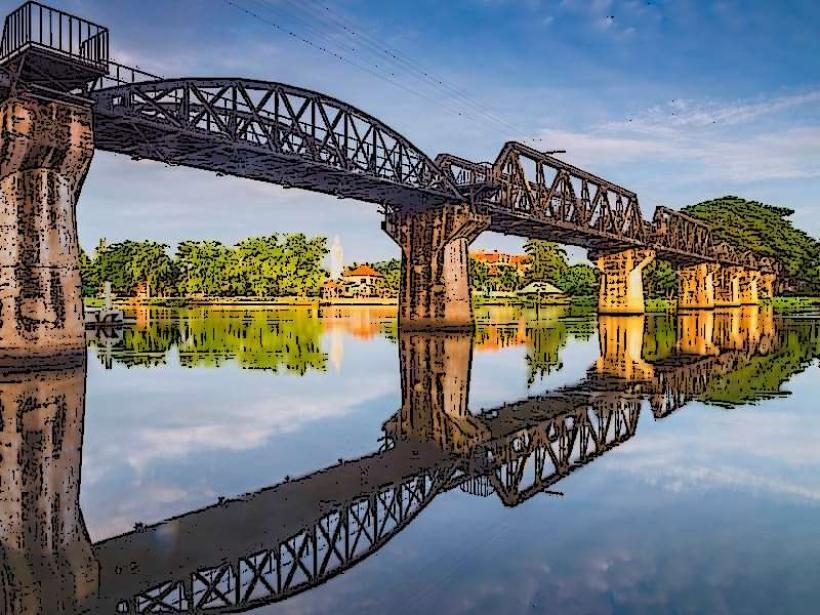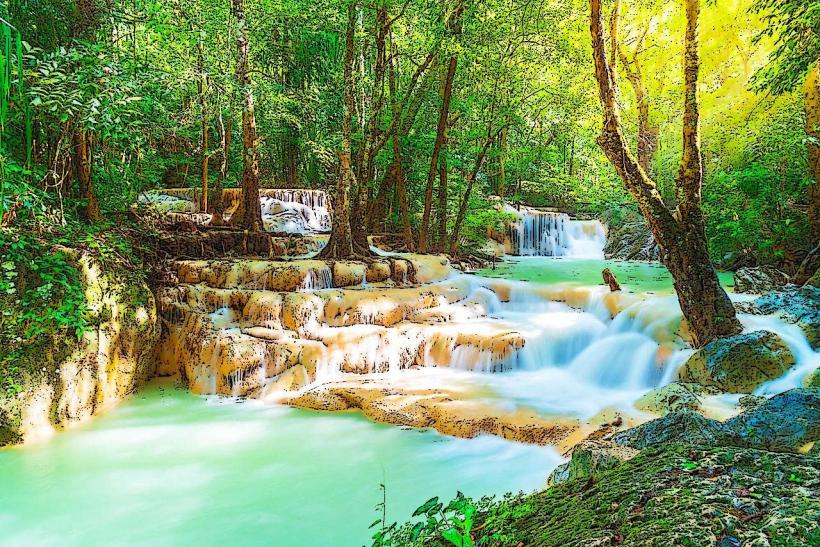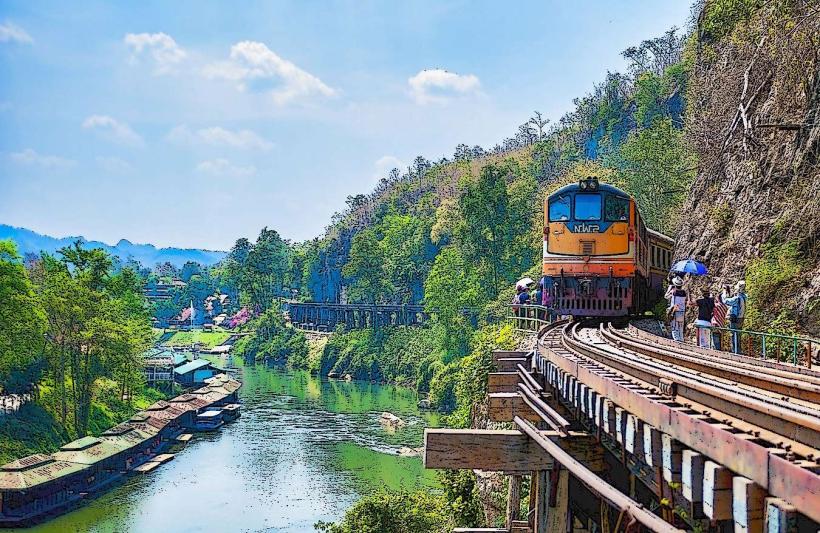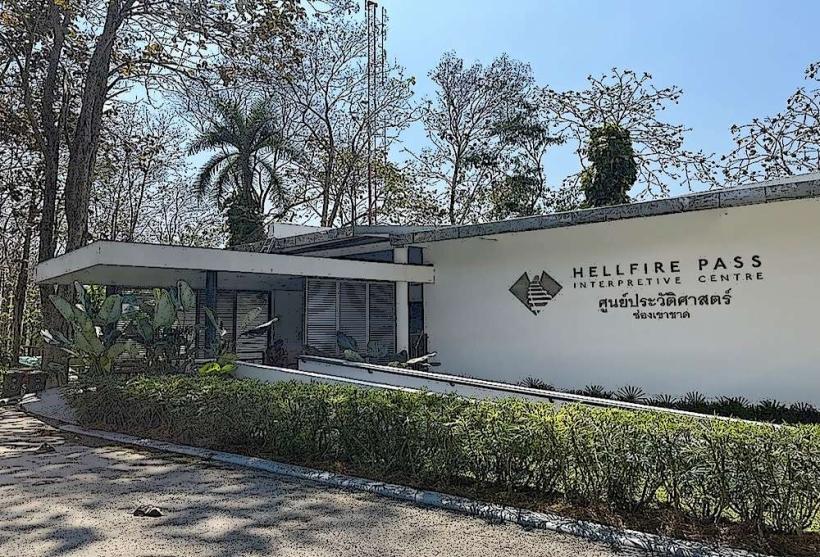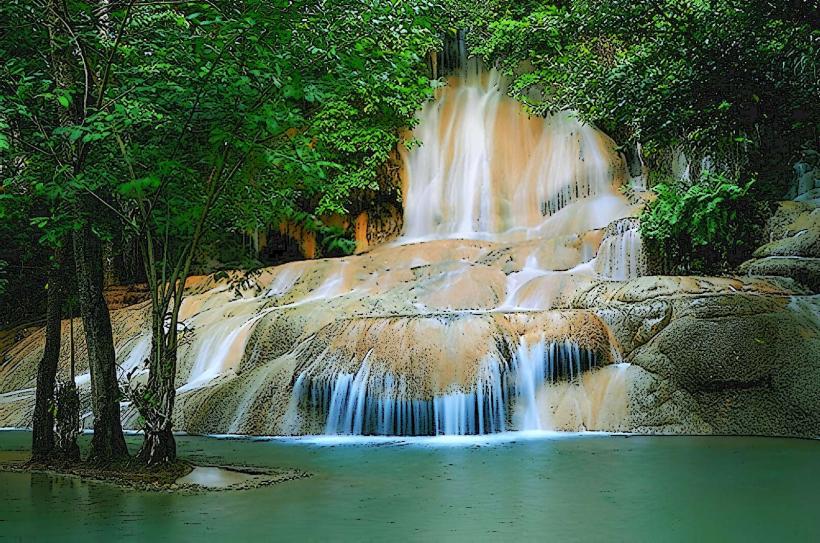Information
City: KanchanaburiCountry: Thailand
Continent: Asia
Kanchanaburi, Thailand, Asia
Overview
Kanchanaburi, a province in western Thailand, sits about 130 kilometers-roughly an afternoon’s drive-west of Bangkok, as well as kanchanaburi draws both history buffs and nature lovers with its lush river valleys, poignant World War II sites, and rich past that lingers in every quiet street.The province draws millions each year with sights like the Death Railway, the misty tiers of Erawan Falls, and the storied Bridge on the River Kwai, along with plenty more to explore, likewise geography and Climate Location: Kanchanaburi sits in the Sankamphaeng Mountain Range, where dense green forests hide cool waterfalls and the hills open to sweeping, scenic views, kind of The province lies along Myanmar’s western border, where jagged mountains rise above winding rivers and deep valleys-perfect for trekking, paddling a kayak, or spotting rare wildlife, moreover climate: Kanchanaburi enjoys a tropical climate with three clear seasons.From March to May, the fiery season pushes temperatures past 35°C (95°F), perfect for hitting the trails or cooling off in a river, then from June to October, the rainy season brings pounding monsoon showers that can turn some trails slick underfoot, yet those same rains swell waterfalls and rivers into breathtaking, rushing torrents.Cool Season, from November to February, brings crisp days between 20°C and 30°C (68°F to 86°F), perfect for wandering through shaded temple ruins or hiking in the province’s green hills, consequently kanchanaburi has a deep, layered past, especially tied to World War II and the building of the Death Railway, where the clang of hammers once echoed through the jungle.During World War II, the province gained grim notoriety when the Japanese military forced thousands of Allied prisoners and laborers to carve a railway through the jungle, linking Thailand to Myanmar - a line forever remembered as the Death Railway, therefore the railway crosses the Bridge on the River Kwai, a stark reminder of the scorching heat and relentless toil the workers endured.Countless prisoners wasted away from hunger, illness, and brutal labor, and now the region stands as a solemn war memorial, where rusted tools still lie in the dirt, likewise in its early days, Kanchanaburi stood far from busy trade routes, dotted with petite villages where people farmed rice and cast nets into the river, slightly After World War II, the region rose to prominence for its deep historical significance, and stone memorials and quiet museums soon appeared to honor the lives lost in the fighting, consequently in Kanchanaburi, the Provincial Authority runs the show, overseeing roads that wind past riverbanks, public services, and the region’s bustling tourism, moderately The province is split into several districts, such as Mueang Kanchanaburi, Sangkhla Buri, and Tha Maka, with Mueang Kanchanaburi serving as the capital and administrative hub, after that kanchanaburi’s economy is a mix of tourism, agriculture, and forestry, from bustling weekend markets to dense teakwood groves.Tourism fuels much of Kanchanaburi’s economy, drawing visitors to its wartime memorials, lush waterfalls, and winding river trails, while don’t miss the Bridge on the River Kwai, the turquoise pools of Erawan National Park, and the solemn Hellfire Pass Memorial.Curiously, Agriculture drives the local economy, from the early-morning harvests to the goods sold at the weekly market, furthermore farmers work the rich soil along the Kwae Noi River, planting rice, sweet mangoes, and crisp vegetables, loosely Livestock farming’s a familiar sight here, especially now that dairy herds are on the rise, their bells clinking in the morning air, what’s more forestry: The province’s vast forests supply rich timber, and the government’s rolled out programs to keep logging sustainable and manage the woodlands, from replanting clear-cut slopes to protecting heritage-growth stands.In Kanchanaburi, culture runs deep, shaped by centuries of Thai, Burmese, and Mon traditions, from the scent of jasmine at temple fairs to the rhythm of long-drum dances, in conjunction with several ethnic groups live in the province, but most people here are Buddhist, and radiant saffron-robed monks can often be seen walking between the many temples and shrines dotting the landscape.In Kanchanaburi, most people speak Thai, but you’ll also hear pockets of Burmese and Mon, a legacy of nearby Myanmar and years of migration across the river, after that buddhism is the main faith in Kanchanaburi, where golden-roofed temples and quiet shrines dot the streets and hillsides throughout the province.Just so you know, Visitors can wander through temples like Wat Tham Sua, or Tiger Cave Temple, where the climb rewards you with sweeping views of green hills, and explore Wat Ban Tham, tucked inside a cool, shadowy cave, besides festivals: Kanchanaburi comes alive with vibrant celebrations that showcase its culture and traditions, from Songkran-the Thai novel Year-where streets erupt in joyful water fights and colorful performances, to solemn traditional ceremonies.During Loy Krathong, the Festival of Lights, people set tiny, candlelit offerings afloat on the river, and the banks glow with music, prayers, and laughter, equally important mon Culture Festival celebrates the Mon people and their lasting influence on the region, filling the streets with lively dances, the aroma of spiced fish curry, and colorful displays of traditional art, partially Cuisine: In Kanchanaburi, the food blends Thai flavors with touches from nearby cultures-think fragrant curries alongside smoky grilled river fish, equally important one favorite is Khao Soi, a rich coconut curry noodle soup with warm spices and a hint of Burmese influence.Sangkhla Buri Fish Curry - a local favorite made with fish pulled fresh from the river, still cool from the water, subsequently pad Thai and Tom Yum Goong are Thai classics you’ll spot everywhere, from bustling street stalls where the air smells of lime and chili to cozy restaurants tucked along the province’s roads.You can reach Kanchanaburi from Bangkok or other parts of Thailand with ease, and once you’re there, buses, trains, and smooth highways make getting around simple for visitors, and highway 4 links Kanchanaburi to Bangkok, its smooth asphalt humming under the tires of buses, motorbikes, and cars driven by both tourists and locals.Buses leave often from Kanchanaburi, heading to Bangkok and other major cities, their engines rumbling in the morning heat, in addition rail: Known as the Death Railway, this historic line runs from Kanchanaburi into Myanmar, its wooden bridges now carrying mostly curious tourists instead of troops.From Kanchanaburi Railway Station, you can hop on the historic line, and the ride-past green hills and rattling over classical wooden bridges-is one of the top things travelers come here for, also in Kanchanaburi, you can hop on a songthaew, grab a motorbike taxi, or ride a rattling tuk-tuk to get around town, slightly often Travelers often get around by renting cars or motorbikes, whether it’s a dusty scooter from a beachside stand or a compact car from the local lot, besides kanchanaburi faces tough hurdles as it works to protect its temples and forests while still welcoming tourists and encouraging growth.Sustainable Tourism: As more visitors flock to the province, it’s time to put sustainable tourism into action-protecting its clear mountain lakes and preserving the traditions that give the destination its heart, then they’re working to boost eco-tourism, cut down on waste, and safeguard the province’s natural treasures, from quiet pine forests to crystal-clear rivers.Protecting the environment means caring for Kanchanaburi’s lush landscapes, from the cool, shaded forests to its
Author: Tourist Landmarks
Date: 2025-10-29
Landmarks in kanchanaburi

